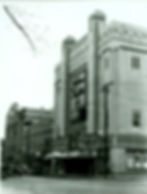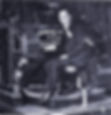
The Past Stays With Us
The luxurious Latonia Theater in Oil City was a popular motion picture house in the region for several decades.
The Venango Museum acquired the Latonia's 1928 Wurlitzer Theater organ in 1988. Thousands of hours of volunteer and professional labor were required to restore the organ to playable condition, which includes more than 600 separate pipes, as well as numerous sound effects and percussion instruments.
As with anything, the Wurlitzer has needed continuous updates and repairs to continue to allow it be playable throughout the years.
Read more below to find out how the Museum is preserving this mighty instrument and how you can help the Museum in its preservation!


















Among the theaters that Oil City once boasted was the Latonia Theater located on the South Side of town. The theater opened its doors on March 4, 1929 and could hold over 1,400 patrons.
The theater operated for several decades before running into financial difficulties in the 1960s. In 1969, the last films were shown in the theater before its closing.

The
Latonia Theater

The Mighty
Wurlitzer
The theater pipe organ was invented and developed in the early 1900s primarily to accompany silent films.
Theaters were built at record speeds and dozens of companies joined the Rudolph Wurlitzer Manufacturing Company to build organs suited for the accompaniment of film, replacing the need for multi-member, cumbersome, expensive orchestras.
The “unit orchestra” contained various orchestral instruments in the form of pipes with examples to include the tuba, oboe, violins, flute, drums, cymbals, and other various effects to replicate the tonalities of an orchestra and to create the mood of the film being presented.
When the talking pictures were introduced, the immediate need for the theatre organ was limited and production slowed, with the Great Depression all but ending the momentum of the production of the organ.
The Venango Museum was fortunate to meet the team at Musical Restorations, LLC. based in Dayton, VA in 2024 who is set to work on restorations on the organ in phases over the next few years.
Since working working on the Museum's Wurlitzer, Musical Restorations has been able to fix over 40 dead notes caused by internal mechanical issues, lessen the number of wind leaks, tune the organ, get the chrysoglott and glockenspiel functioning reliability, get the tremulants to turn on and function reliably, and much, much more.
The Musical Restorations team also cleaned up the console, replacing the Phillips-head screws with new nickel plated slotted screws, and replaced the homemade music rack light with a new Wurlitzer replica from their stock.
The organ consists of 8 ranks – flute, salicional, celeste, diapason, tuba horn, tibia, kinura, and a vox humana.
The 5 tuned percussions included a 37-note xylophone, 49-note chrysoglott, 30-note glockenspiel, 25-note chimes, and 25-note sleigh bells.
The second phase of the project will begin in 2025, focusing on restoring the instrument’s percussions.
Would you like to help fund this restoration project with an estimated cost of $60,000? If so, please donate online through the form below!

Today's
Restoration
Donate To The Wurlitzer Theater Organ Restoration
Would you like to assist us in funding this restoration project? Please consider taking the time to fill out the form below with your contribution!
Frequency
One time
Monthly
Amount
$50
$100
$250
$500
Other
